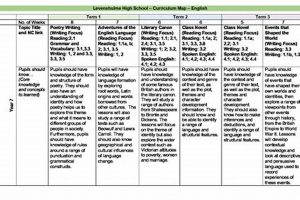Romantic relationships formed during adolescence represent a significant developmental milestone. These early pairings offer opportunities to explore intimacy, develop communication skills, and navigate complex emotions. While some relationships initiated in high school can endure beyond graduation, many conclude within a shorter timeframe. Understanding the typical duration of these relationships can provide valuable context for teenagers navigating this aspect of their lives.
Researching relationship longevity in this demographic offers valuable insights into adolescent development and social dynamics. It can inform educational programs focused on healthy relationships, communication, and emotional intelligence. Historical context can also shed light on how societal shifts, cultural norms, and technological advancements have influenced relationship patterns among teenagers over time. Exploring these factors can equip educators, parents, and teens themselves with a better understanding of relationship expectations and outcomes.
This discussion will further explore the variables influencing the duration of adolescent romantic relationships, considering factors such as individual personalities, external pressures, and the evolving understanding of commitment during this formative period. Additional topics will include the impact of social media and the evolving landscape of romantic relationships in the digital age.
Navigating romantic relationships during adolescence can be challenging. These tips offer guidance for young people as they explore these formative experiences.
Tip 1: Prioritize Open Communication: Healthy relationships thrive on honest and respectful communication. Clearly expressing needs and actively listening to a partner fosters understanding and strengthens the connection.
Tip 2: Manage Expectations Realistically: Understanding that relationships evolve and sometimes end is crucial. Developing realistic expectations regarding relationship longevity can help mitigate potential disappointment and heartbreak.
Tip 3: Maintain Individuality: While sharing experiences is important, maintaining personal interests and friendships outside the relationship contributes to a healthy sense of self and prevents over-reliance on a partner.
Tip 4: Respect Boundaries: Establishing and respecting personal boundaries within a relationship is essential. This includes emotional, physical, and digital boundaries, ensuring both individuals feel safe and comfortable.
Tip 5: Seek Support When Needed: Navigating relationship challenges can be difficult. Seeking guidance from trusted adults, such as parents, counselors, or mentors, can provide valuable support and perspective.
Tip 6: Learn from Every Experience: Whether a relationship endures or concludes, each experience offers opportunities for growth and self-discovery. Reflecting on past relationships can provide valuable insights for future connections.
By understanding the dynamics of adolescent relationships and utilizing these tips, young people can cultivate healthy relationship patterns and develop essential skills for navigating future romantic partnerships.
This understanding contributes to a broader discussion about the significance of adolescent relationships in personal development and the importance of fostering emotional intelligence during this formative stage.
1. Duration
Duration plays a pivotal role in understanding the longevity of high school relationships. The length of time a relationship endures offers insight into its stability and the factors influencing its trajectory. While quantifying the exact percentage of high school relationships that “last” is complex due to varying definitions of success, duration provides a measurable metric for analysis. For instance, a relationship lasting one year may be considered successful within the high school context, whereas a shorter duration might not. This highlights how duration influences the perceived success rate, impacting the overall statistic of “what percent of high school relationships last.” Consider a relationship ending due to geographical separation after graduation; despite its relative success during high school, its duration is capped by external circumstances.
Examining duration necessitates considering the interplay of various influencing factors. Relationships of longer duration often indicate stronger foundations, potentially characterized by effective communication, shared values, and successful conflict resolution. Conversely, shorter durations can signify underlying challenges such as incompatibility, external pressures, or shifting priorities. For example, a couple with strong communication skills might navigate disagreements effectively, contributing to a longer-lasting relationship. Conversely, a couple facing significant external pressures might experience a shorter relationship duration due to these added strains. Therefore, analyzing duration offers valuable insights into the dynamics contributing to relationship success and failure within the high school context.
Understanding the relationship between duration and the perceived success rate of high school relationships offers practical significance for adolescents navigating this developmental stage. Recognizing that relationship duration is influenced by a complex interplay of internal and external factors can promote realistic expectations and foster healthier relationship dynamics. Furthermore, this understanding can inform educational initiatives focused on promoting healthy relationship skills and supporting adolescents as they navigate the complexities of romantic involvement. While quantifying the exact percentage remains elusive, exploring duration provides a tangible framework for understanding the dynamics and outcomes of adolescent romantic relationships.
2. Maturity Levels
Maturity levels significantly influence the trajectory and longevity of high school relationships. The ability to navigate complex emotions, communicate effectively, and make responsible decisions contributes substantially to relationship stability. Adolescents at different maturity levels approach relationships with varying degrees of understanding and preparedness. A higher level of emotional maturity often correlates with a greater capacity for empathy, compromise, and conflict resolution, all crucial components of healthy, lasting relationships. For instance, individuals capable of managing impulsive reactions and considering long-term consequences are better equipped to navigate relationship challenges constructively. Conversely, individuals with lower emotional maturity may struggle with communication breakdowns, escalating conflicts, and impulsive decisions that can jeopardize the relationship. This correlation between maturity and relationship stability significantly impacts the overall percentage of high school relationships that endure.
The practical significance of understanding this connection lies in its implications for relationship education and guidance for adolescents. Programs focusing on developing emotional intelligence, communication skills, and responsible decision-making can empower young people to cultivate healthier relationship patterns. Consider a scenario where two individuals in a relationship possess different maturity levels. The more mature partner might take on a greater responsibility for managing conflicts and maintaining stability, potentially leading to an imbalance within the dynamic. Conversely, if both partners actively work on developing their emotional maturity, the relationship is more likely to thrive. Equipping adolescents with these skills not only enhances their current relationships but also fosters healthier relationship dynamics in their future.
In conclusion, maturity levels serve as a crucial factor influencing the duration and success of high school relationships. Understanding this connection offers valuable insights for educators, parents, and adolescents themselves, facilitating proactive interventions and promoting healthy relationship development during this formative stage. Addressing the challenges associated with varying maturity levels can contribute significantly to increasing the percentage of high school relationships that transition into healthy, long-term partnerships. This emphasizes the importance of incorporating maturity-focused education within broader discussions of adolescent relationships and their impact on personal development.
3. External Pressures
External pressures play a significant role in the duration of high school relationships. These pressures, stemming from sources such as parental expectations, peer influence, and societal norms, can exert considerable influence on relationship dynamics and outcomes. Parental disapproval, for instance, might lead to strained interactions and ultimately contribute to a relationship’s dissolution. Conversely, supportive family environments can foster stability and increase the likelihood of a relationship enduring. Peer dynamics also exert considerable influence; pressure to conform to social norms or maintain a particular image within a peer group can affect relationship choices and behaviors. Furthermore, societal expectations regarding relationship milestones or timelines can create added pressure for adolescents navigating romantic involvement.
The impact of external pressures becomes particularly evident during significant life transitions, such as the transition from high school to college or entering the workforce. Geographical separation resulting from different college choices can strain relationships, highlighting the influence of external circumstances on relationship longevity. Consider a scenario where one partner faces pressure from family to prioritize academic pursuits over romantic involvement. This pressure could lead to tension within the relationship and ultimately influence its trajectory. Another example involves peer pressure to engage in activities incompatible with a committed relationship, potentially leading to conflict or a breakup. These examples underscore the practical significance of understanding how external pressures influence relationship outcomes.
In summary, external pressures represent a critical factor impacting the duration and stability of high school relationships. Recognizing the diverse sources of these pressuresparental expectations, peer influence, societal norms, and life transitionsoffers valuable insights into the complex dynamics influencing adolescent relationships. This understanding holds practical implications for educators, parents, and adolescents themselves, enabling proactive strategies to navigate external pressures effectively and promote healthy relationship development during this formative period. Addressing these pressures is integral to a comprehensive understanding of adolescent relationship dynamics and their long-term implications.
4. Life Transitions
Life transitions represent a pivotal factor influencing the longevity of high school relationships. These transitions, often characterized by significant changes in environment, responsibilities, and social dynamics, can exert considerable pressure on romantic partnerships formed during adolescence. Understanding the impact of these transitions offers valuable insights into the complex interplay of factors affecting relationship stability and provides a framework for interpreting the percentage of high school relationships that endure beyond this formative period.
- Geographical Separation
Perhaps the most prominent life transition impacting high school relationships is geographical separation due to post-graduation plans. Attending different colleges, pursuing distinct career paths, or relocating for other opportunities introduces physical distance and logistical challenges that can strain even the strongest bonds. Maintaining consistent communication, navigating new social circles, and managing independent lives often lead to divergent paths, ultimately impacting a relationship’s ability to withstand this significant change. For instance, a couple attending colleges on opposite sides of the country might face difficulties maintaining the same level of connection and intimacy they experienced during high school. This physical distance often contributes to a decrease in shared experiences and increases the likelihood of developing separate social networks, potentially leading to relationship strain or dissolution. The impact of geographical separation is a significant factor contributing to the overall percentage of high school relationships that ultimately conclude.
- Shifting Priorities
Life transitions often necessitate a reevaluation of personal priorities. The focus on academic pursuits, career aspirations, and newfound independence can shift attention away from romantic relationships. The demands of a rigorous academic program or the pursuit of professional opportunities might require significant time and energy, leaving less time for nurturing a romantic partnership. For example, a student heavily involved in extracurricular activities or pursuing a demanding major might find less time to dedicate to their relationship, potentially leading to feelings of neglect or resentment. This shift in priorities can impact the dynamics of a relationship, influencing its ability to adapt and thrive amidst changing individual circumstances. The ability of a relationship to accommodate these shifting priorities often contributes to its overall longevity, influencing the percentage of high school relationships that successfully navigate this transition.
- Evolving Social Circles
Life transitions, particularly the transition to college or a new work environment, often involve expanding and evolving social circles. Exposure to new individuals, perspectives, and social dynamics can influence personal growth and identity formation. This process can lead to reevaluating existing relationships and exploring new connections. For instance, a student who joins a new club or organization in college might develop close friendships with individuals who share their interests and values. This expansion of their social network can lead to changes in their perspective and priorities, potentially influencing their existing romantic relationship. The ability of a relationship to adapt to these evolving social circles, incorporating new connections and navigating potential jealousy or insecurity, often plays a crucial role in its longevity.
- Increased Independence
Life transitions often mark a period of increased independence and autonomy. Adolescents leaving home for college or entering the workforce gain greater control over their decisions, schedules, and lifestyles. This newfound independence can significantly impact romantic relationships, requiring increased responsibility, communication, and compromise. For example, a couple living independently for the first time might face challenges navigating shared finances, household responsibilities, and differing lifestyles. This increased independence can either strengthen a relationship through shared responsibility and mutual respect or create strain if partners struggle to adapt to these new dynamics. The capacity of a relationship to accommodate individual growth and increased autonomy often contributes to its overall success and longevity.
These facets of life transitions collectively contribute to a comprehensive understanding of their impact on high school relationships. The ability of a relationship to navigate geographical separation, shifting priorities, evolving social circles, and increased independence significantly influences its likelihood of enduring beyond the high school years. These factors offer valuable insights into the complex dynamics affecting relationship stability and provide a nuanced perspective on the percentage of high school relationships that successfully transition into long-term partnerships. Ultimately, navigating these transitions successfully often requires adaptability, effective communication, and a shared commitment to maintaining the relationship amidst significant life changes.
5. Communication Styles
Communication styles significantly influence the trajectory and longevity of high school relationships. Effective communication, characterized by active listening, clear expression of needs and emotions, and respectful conflict resolution, strengthens bonds and fosters mutual understanding. Conversely, dysfunctional communication patterns, such as passive-aggressive behavior, avoidance of difficult conversations, or dismissive responses, can erode trust and create distance between partners. These patterns often lead to misunderstandings, unresolved conflicts, and emotional distress, increasing the likelihood of relationship dissolution. For example, a couple who openly communicates their feelings and concerns, even during disagreements, is more likely to navigate challenges constructively and maintain a healthy connection. Conversely, a couple who avoids addressing underlying issues or resorts to blaming and criticism is more likely to experience escalating conflict and ultimately, relationship breakdown. This direct correlation between communication styles and relationship outcomes plays a crucial role in determining the percentage of high school relationships that endure.
The practical significance of understanding this connection lies in its implications for relationship education and guidance for adolescents. Programs and resources that equip young people with effective communication skills can empower them to build stronger, healthier relationships. Learning how to express emotions assertively, practice active listening, and engage in constructive conflict resolution can significantly enhance relationship dynamics. Consider a scenario where one partner consistently interrupts or dismisses the other’s opinions. This pattern of dismissive communication can create feelings of invalidation and resentment, ultimately damaging the relationship. Conversely, if both partners actively practice empathetic listening and validate each other’s perspectives, they are better equipped to navigate disagreements and maintain a strong connection. This emphasis on communication skills development can contribute to a higher percentage of successful and fulfilling high school relationships.
In summary, communication styles serve as a critical factor influencing the duration and stability of high school relationships. Understanding the profound impact of communication patterns on relationship outcomes offers valuable insights for educators, parents, and adolescents themselves. By fostering effective communication skills and addressing dysfunctional patterns, interventions can promote healthier relationship dynamics and contribute to increasing the percentage of high school relationships that thrive. This understanding highlights the crucial role of communication in adolescent relationship development and its implications for long-term relationship success.
6. Individual Priorities
Individual priorities exert a substantial influence on the longevity of high school relationships. During adolescence, individuals undergo significant personal development, and their priorities often evolve rapidly. Academic pursuits, extracurricular activities, personal interests, and future aspirations can compete for time and attention, impacting the dynamics and trajectory of romantic relationships. When individual priorities align within a relationship, it can foster shared goals and mutual support. However, diverging priorities can create tension, leading to feelings of neglect or resentment. For instance, if one partner prioritizes academic excellence while the other prioritizes social activities, this discrepancy can lead to conflict and strain the relationship. Conversely, a couple with shared academic goals can provide mutual support and encouragement, strengthening their bond. This interplay of individual priorities directly impacts the percentage of high school relationships that endure beyond this developmental stage.
The practical significance of understanding this connection lies in its potential to foster healthier relationship dynamics. Recognizing that individual priorities can shift and evolve allows for open communication and negotiation within a relationship. Couples who effectively communicate their priorities and find ways to support each other’s pursuits are more likely to navigate challenges successfully. Furthermore, acknowledging the importance of maintaining individual interests and aspirations outside the relationship can contribute to a healthier sense of self and prevent over-reliance on a partner. Consider a scenario where one partner prioritizes competitive sports, requiring significant time commitment and travel. If the other partner understands and supports this priority, they can adapt their expectations and find ways to maintain connection despite the time constraints. This adaptability and mutual respect contribute to a more sustainable and fulfilling relationship. Conversely, a lack of understanding and support for individual priorities can lead to feelings of resentment and ultimately contribute to relationship breakdown. This highlights the practical application of this understanding in promoting healthy relationship development among adolescents.
In conclusion, individual priorities represent a key factor influencing the duration and stability of high school relationships. Understanding how these priorities interact and impact relationship dynamics provides valuable insights for educators, parents, and adolescents themselves. Promoting open communication, mutual support, and respect for individual aspirations can foster healthier relationship patterns and increase the likelihood of successful navigation through this formative period. This understanding is crucial for developing a comprehensive perspective on the complexities of adolescent relationships and their long-term implications.
7. Definition of "Lasting"
The definition of “lasting” significantly influences the perceived success rate of high school relationships. Varied interpretations of what constitutes a “lasting” relationship directly impact the statistical analysis of how many such relationships endure. A narrow definition, such as lasting until marriage, yields a significantly lower percentage compared to a broader definition, such as maintaining a friendship after a romantic breakup. For instance, a couple dating for two years in high school but separating amicably before college might be considered a “success” under the broader definition but not the narrower one. This variability underscores the importance of defining parameters when assessing relationship longevity. The absence of a consistent definition complicates attempts to quantify relationship success and presents challenges in interpreting data related to high school relationship outcomes. This variability directly affects how one calculates “what percent of high school relationships last.”
Furthermore, individual perspectives further complicate the definition. One individual might consider a relationship “lasting” if it provided valuable learning experiences and personal growth, regardless of duration. Another might prioritize duration above all else, deeming only long-term commitments “successful.” These subjective interpretations introduce complexities when attempting to establish a universally applicable definition. Consider a couple who dated for a short period but experienced significant personal growth through navigating communication challenges. One partner might consider this a “lasting” relationship due to the lessons learned, while the other might view it as a short-term, unsuccessful experience due to its limited duration. These differing perspectives emphasize the subjective nature of defining “lasting” and its subsequent impact on perceived relationship success rates.
In conclusion, the definition of “lasting” significantly impacts the interpretation of high school relationship outcomes. Recognizing the subjective and varied nature of this definition offers valuable context for understanding the complexities of adolescent relationships. This understanding emphasizes the need for nuanced interpretations of statistical data related to relationship longevity, acknowledging that “what percent of high school relationships last” depends significantly on how “lasting” is defined. Furthermore, this recognition can foster more productive conversations about relationship expectations and success among adolescents, encouraging a focus on personal growth and learning within romantic experiences, regardless of duration or outcome.
Frequently Asked Questions
This section addresses common inquiries regarding the longevity of high school relationships, offering evidence-based insights and dispelling prevalent misconceptions.
Question 1: Can high school relationships last?
While statistically less common than relationships formed later in life, high school relationships can indeed endure. Factors such as commitment, communication, and shared values contribute to increased longevity.
Question 2: What factors influence the duration of high school relationships?
Several factors influence relationship duration, including individual maturity levels, effective communication, external pressures from family or peers, and the ability to navigate life transitions such as college or career choices.
Question 3: How does the transition to college impact high school relationships?
The transition to college presents significant challenges, including geographical separation, shifting priorities, and evolving social circles. These factors can strain relationships and contribute to their dissolution.
Question 4: Are high school relationships less serious than adult relationships?
The seriousness of a relationship depends on the individuals involved, not solely on age. High school relationships can offer valuable opportunities for emotional growth, communication skill development, and exploration of intimacy.
Question 5: How can adolescents improve the likelihood of a successful high school relationship?
Prioritizing open communication, managing expectations realistically, respecting boundaries, and seeking support when needed can contribute to healthier and potentially longer-lasting relationships.
Question 6: What can be learned from high school relationships, even if they don’t last?
Regardless of duration, high school relationships provide valuable learning experiences related to communication, emotional regulation, and navigating relationship dynamics. These lessons can inform future relationships and contribute to personal growth.
Understanding the dynamics and challenges inherent in high school relationships provides valuable context for adolescents navigating this developmental stage. These insights can foster healthier relationship patterns and promote emotional well-being.
For further exploration of adolescent development and relationship dynamics, consult the resources provided below.
Lasting Love
Exploring the question of “what percent of high school relationships last” reveals a complex interplay of factors influencing relationship duration and perceived success. While pinpointing a precise percentage proves elusive due to varying definitions of “lasting” and the multitude of influencing factors, several key elements emerge as crucial determinants. Maturity levels, communication styles, external pressures, life transitions, and individual priorities all contribute significantly to whether a high school relationship endures or dissolves. Furthermore, the very definition of a “lasting” relationship varies considerably, encompassing perspectives ranging from maintaining a long-term commitment to deriving valuable learning experiences, regardless of duration. This nuanced understanding underscores the importance of considering individual circumstances, relationship dynamics, and personal definitions of success when assessing relationship longevity within the high school context.
Ultimately, the exploration of high school relationship longevity offers valuable insights into adolescent development, relationship dynamics, and the factors contributing to healthy, fulfilling partnerships. Further research and open discussions regarding relationship expectations, communication skills, and emotional intelligence can empower adolescents to navigate the complexities of romantic involvement effectively. Fostering a supportive environment that encourages healthy relationship development, regardless of duration, can equip young people with the skills and understanding necessary for building strong, resilient relationships throughout their lives. This necessitates a shift from focusing solely on duration to emphasizing the valuable learning experiences inherent in all relationships, regardless of outcome.







